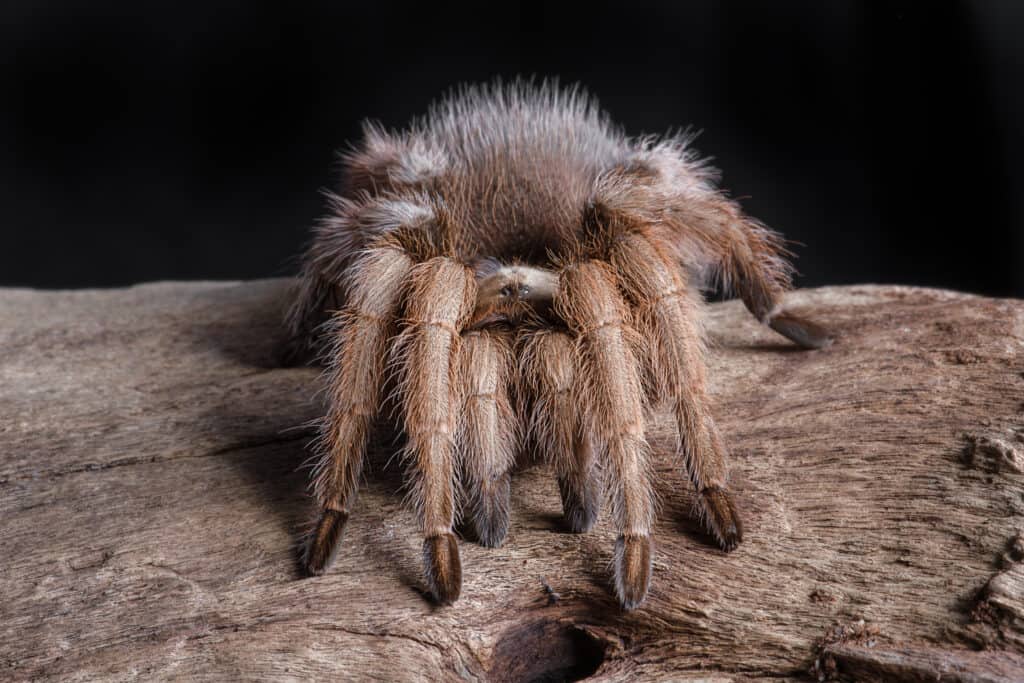Tarantulas are the biggest spiders out there. Although they creep some people out, they’re so fascinating that several people want to keep one as a pet. Another fascinating thing you probably didn’t know about these critters is their lifespan.
Tarantulas aren’t just the biggest spiders; they’re the longest-living ones. While many house spiders only live for a few years, tarantulas can survive for several decades. There have been reports of tarantulas living well into their 20s and as much as 40 years. This post answers the question of how long tarantulas live and the various factors that can affect their lifespan.
How Long Do Tarantulas Live?

Tobias Hauke/Shutterstock.com
Tarantula lifespan varies considerably from one species to the other and heavily depends on the spider’s gender. Male tarantulas have a shorter lifespan, with a minimum of about three years for most species. Females live considerably longer. Although some female species have been observed to live for almost 40 years, you can expect them to live between 10 and 30 years on average.
Generally, tarantulas live longer in captivity than in the wild. In fact, it is unlikely for a spider to grow to a good old age and die of natural causes in the wild. In most cases, as the spider grows older, it becomes slower and more vulnerable to predators.
Tarantula Lifespan for Different Species
Tarantula lifespan varies from one species to the other. Since there are over 800 species of spiders in the tarantula family, it is impossible to give an exact universal estimate. With proper care, some spider breeds like the pink-toed, red-knee, and rose-hair tarantulas can live for as much as seven years for males and up to 30 years for females.
The Mexican redleg tarantula (Brachypelma emelia) is arguably the longest-living tarantula species in the world. There are claims that this spider can live for up to 35 years in captivity. The Oklahoma brown is another tarantula species likely to grow very old. It attains maturity at about 10 years, and females can live for 36 years. Here’s a table of other spider species and how long they’re likely to live.
As this table shows, a tarantula’s lifespan highly depends on the species you’re dealing with. If you’re planning to get one as a pet, you should research and ask questions about the longevity of the specific species you intend to get. Lifespan can vary considerably even between members of the same genus. A classic example of this is the case of Brachypelma hamorii and Brachypelma albopilosum. These two spiders belong to the Brachypelma genus and are similar in appearance and behavior. But while B. hamorii females have a long lifespan of up to 40 years, B. albopilosum lives for about 15 years on average.
Factors That Determine the Lifespan of a Tarantula

Spiders are resilient creatures that have adapted to survive even in extreme conditions. Although they generally have a long lifespan, certain factors determine how long the arachnid will live. Aside from the species, the other factors that affect a tarantula’s lifespan are its sex and the type of care it receives.
Tarantula Lifespan—Male vs. Female
Sex is a major factor that determines the lifespan of an animal. For some species, males live longer than females. The opposite is true for tarantulas and other spider species. In fact, the discrepancy between the lifespan of male and female tarantulas is quite remarkable, and scientists are not exactly sure why this happens.
Generally, male tarantulas will only survive for one or two years after they reach sexual maturity. Since most males reach maturity in about two or three years, the maximum lifespan for most male tarantulas is between three and six years. Only a handful of male tarantulas manage to get past this and survive till 10 years of age.
Female tarantulas are generally luckier. In all species, the female tarantula always outlives the male, with reports of some females living up to 35 years. Although different theories have been proposed to explain the lifespan discrepancy, some experts think female tarantulas live longer than males because they’re more docile. According to one study, the more active males have a higher metabolic rate and experience more stress. This leads to higher production of reactive oxygen, which shortens their lifespan.
How Care Affects Tarantula Lifespan
Different tarantula species have additional care requirements, from their food to how they’re housed. They even have specific temperature and humidity requirements. In essence, neglect and poor care can shorten your tarantula’s lifespan.
Food
In one experiment to determine how long a tarantula can live without food, scientists discovered that this spider could survive for up to two years, nine months, and 19 days. This shows that your spider is likely to die off if it is not fed correctly.
Ironically, feeding your spider too much can also reduce life expectancy. How fast a spider reaches maturity depends on how much food they get. Power feeding your spider means it will attain maturity more quickly, and it all goes downhill from that point, especially for male spiders.
Housing
Poor housing can stress your spider significantly and shorten its lifespan. Proper housing for your tarantula should be big enough and designed optimally for the specific species of spider you’re keeping. For instance, if you own a ground-dwelling tarantula, the floor of the enclosure should contain substrate that it can burrow into to hide. Conversely, an arboreal species needs things to climb to be comfortable.
The Right Living Conditions
In addition to building a proper enclosure, you must expose your spider to the right conditions as far as temperature and humidity are concerned. The specific temperature and humidity requirements vary from one spider to the other. Find out what your tarantula needs to be in optimal health. While many tarantulas can survive well at room temperature, some species have different temperature and humidity requirements.
In addition, you should also ensure that your spider’s enclosure is kept clean and healthy at all times. This reduces susceptibility to diseases and germs that may affect the spider’s optimal health, causing an untimely death.
Up Next
- What Do Tarantulas Eat? 23 Foods They Consume
- Goliath Tarantula vs. Camel Spider: What Are 8 Key Differences?
The post Tarantula Lifespan: How Long Do Tarantulas Live? appeared first on AZ Animals.
from Animal News, Facts, Rankings, and More! - AZ Animals https://ift.tt/drSL14m